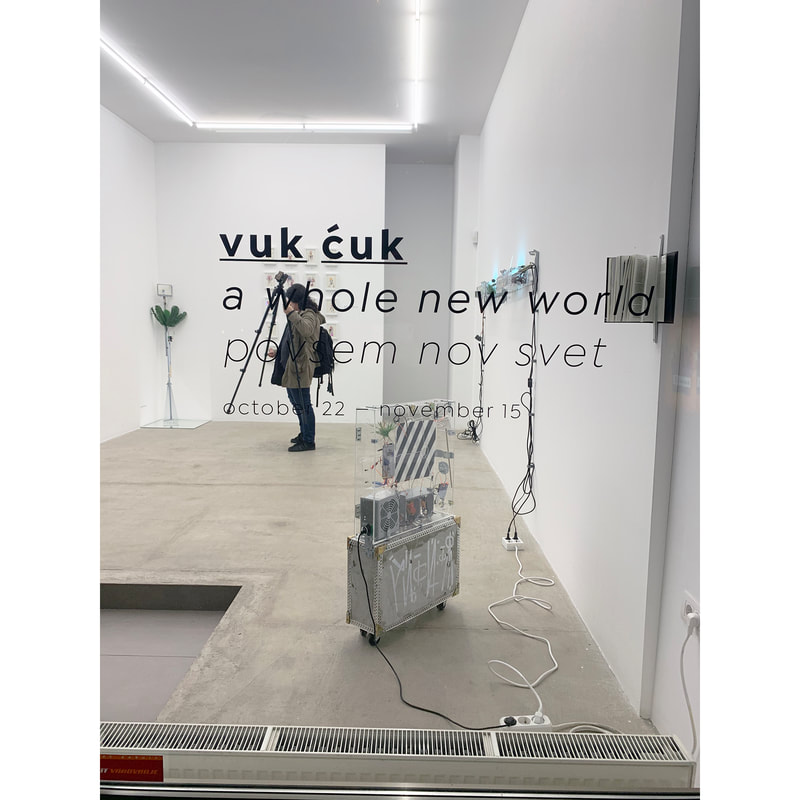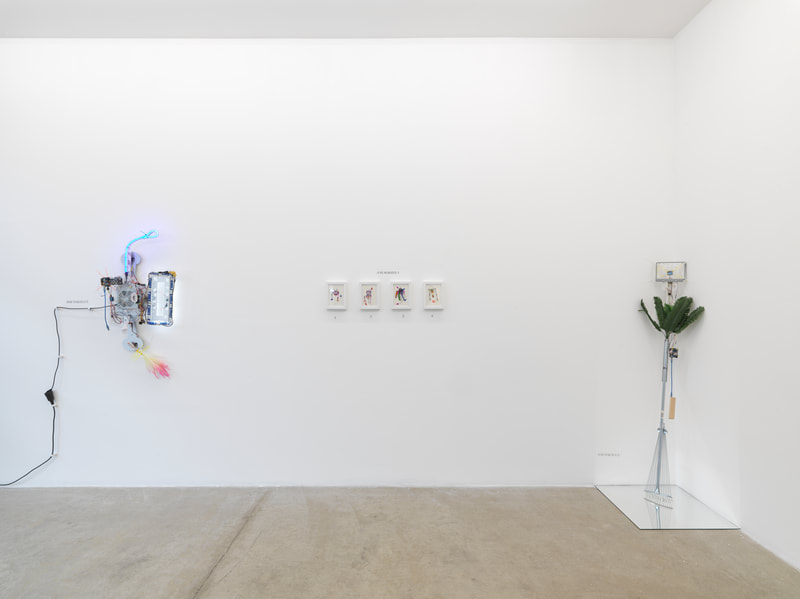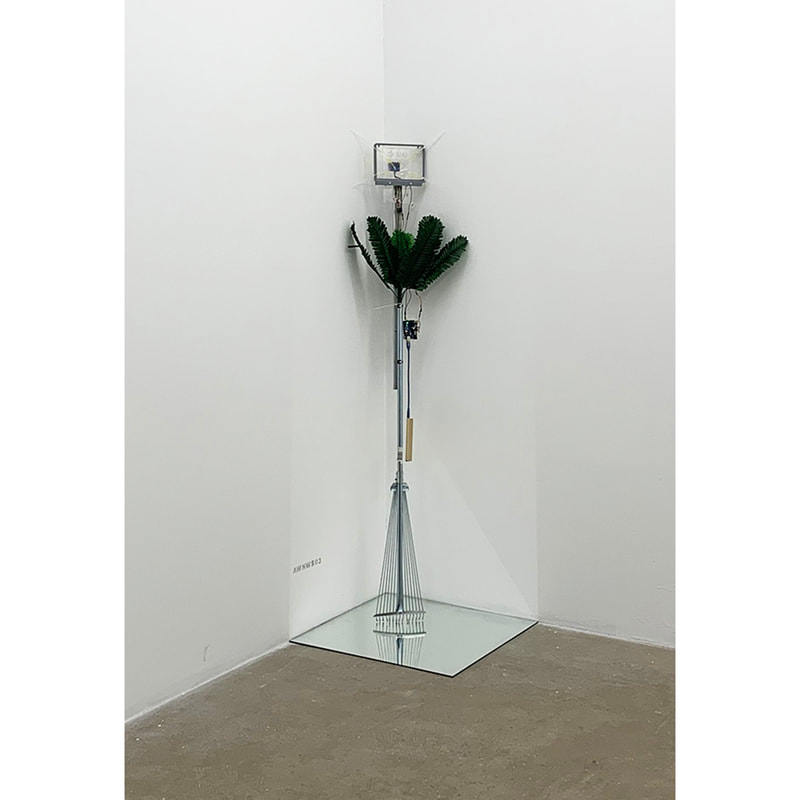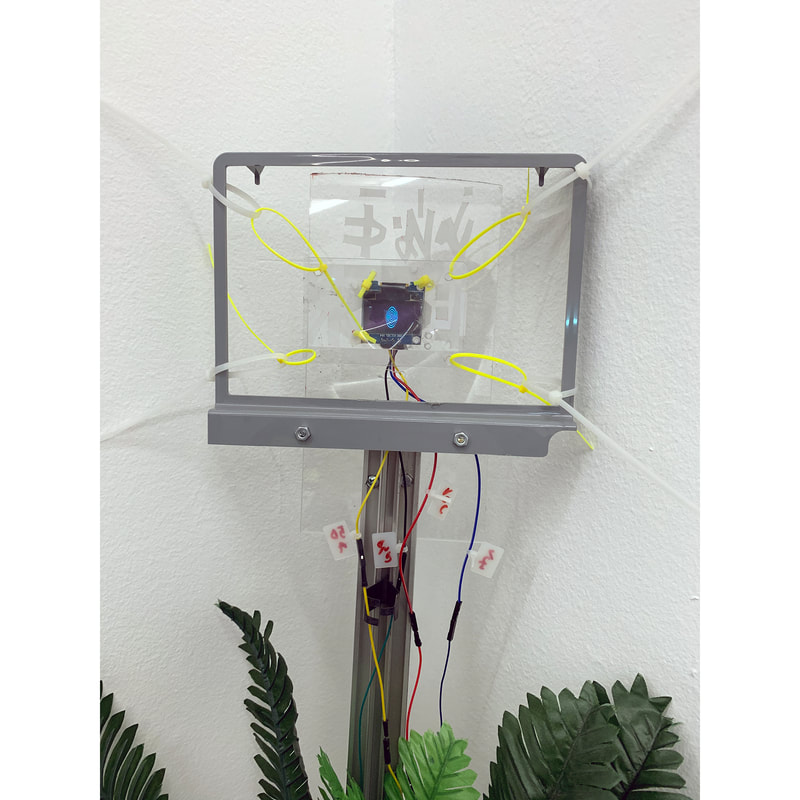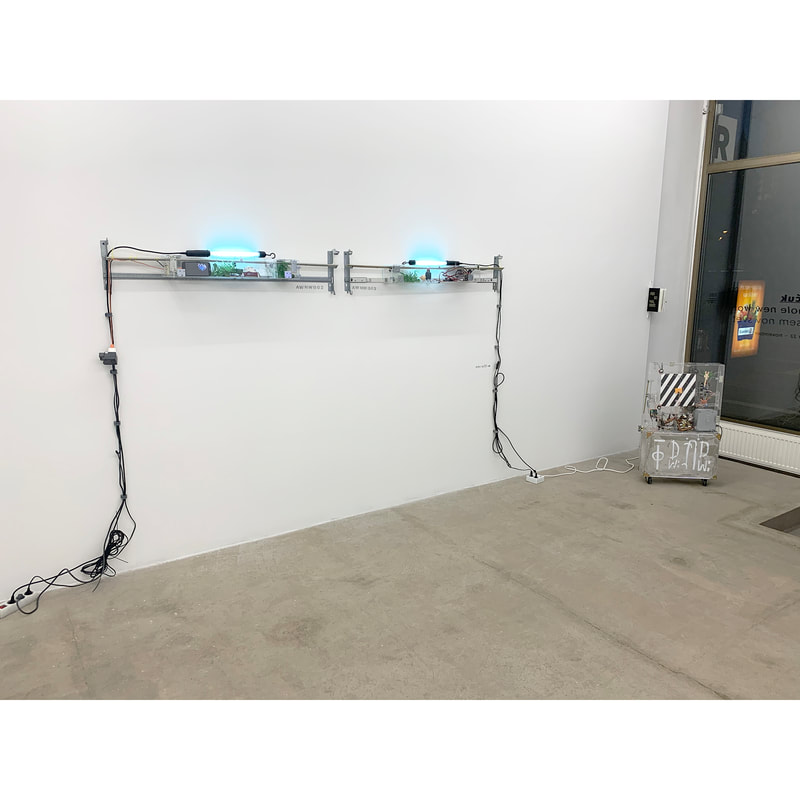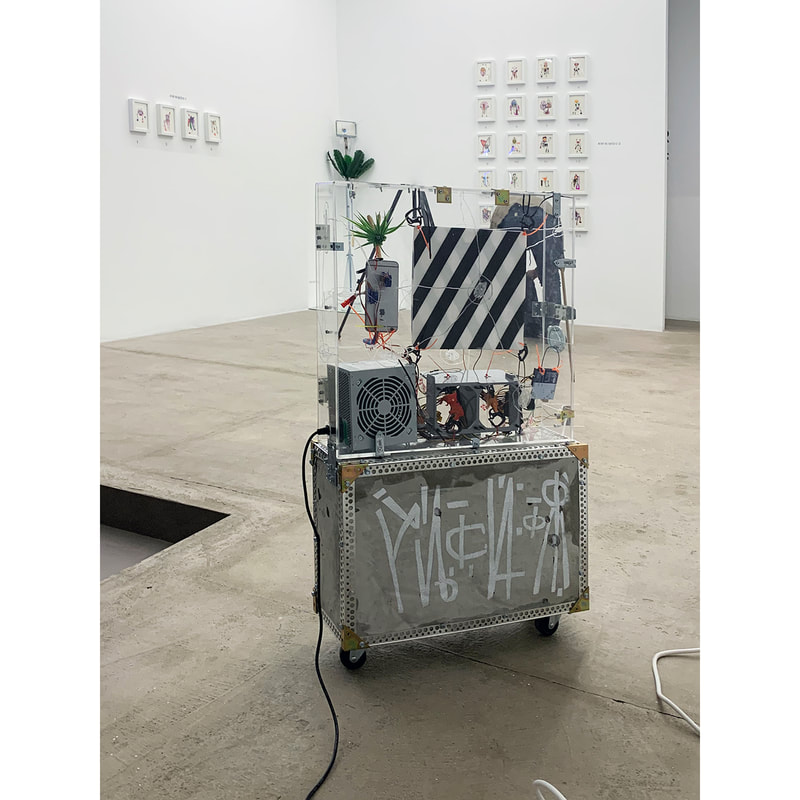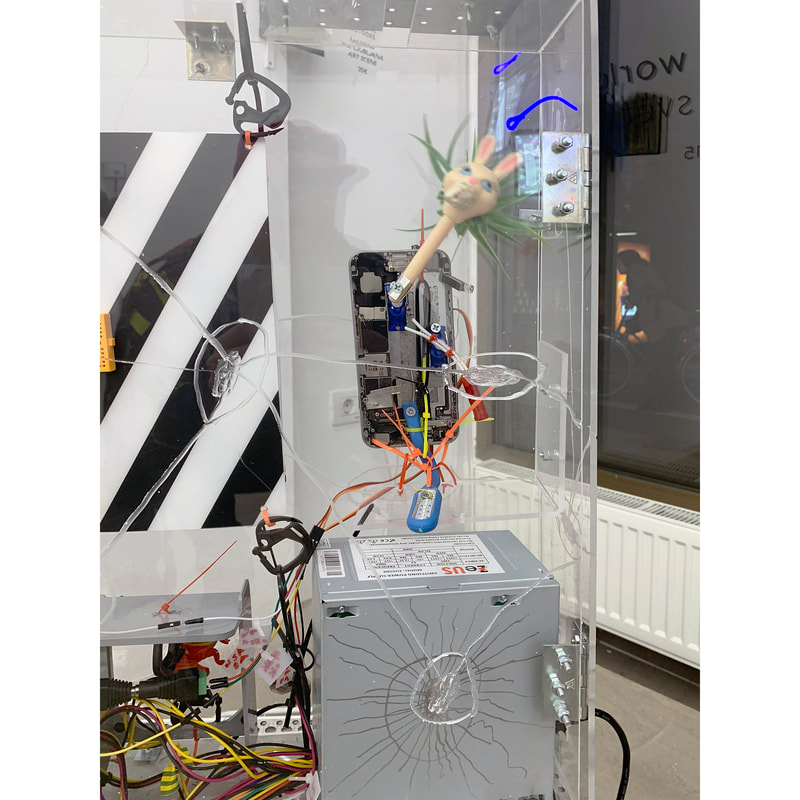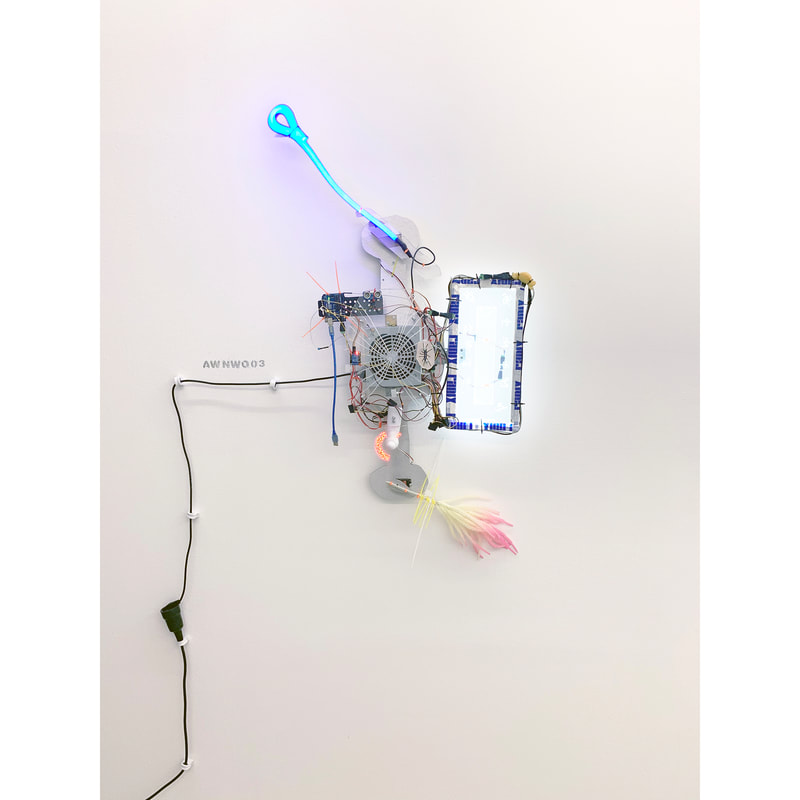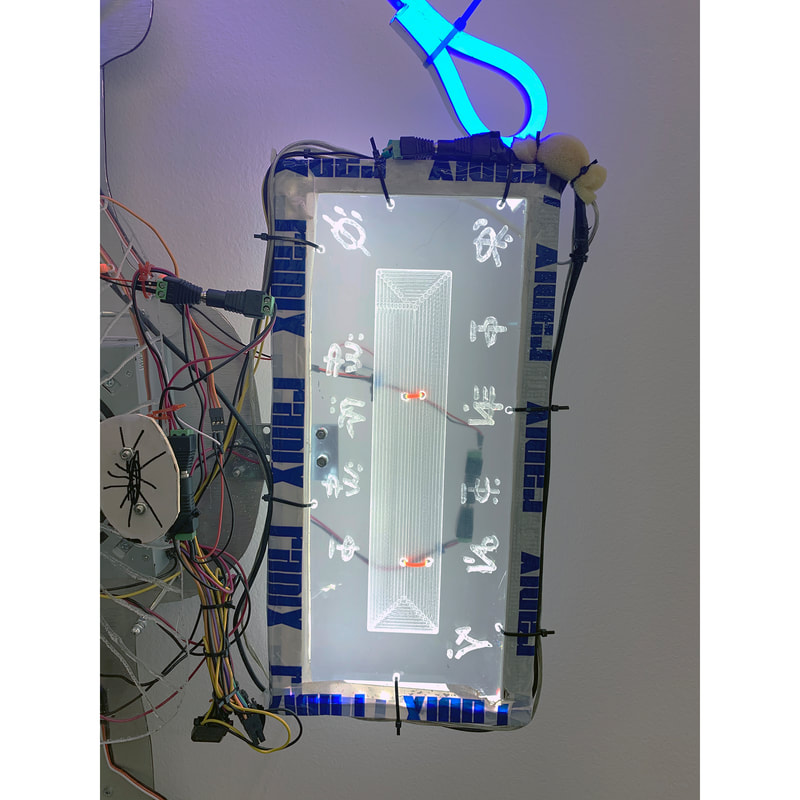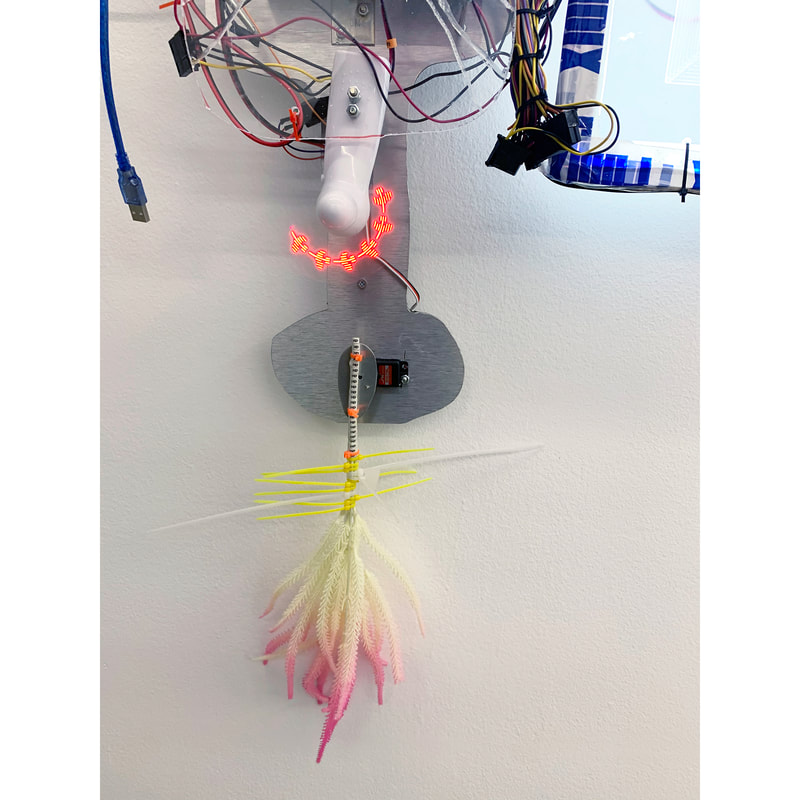A WHOLE NEW WORLD 2
Ravnikar gallery Space
-
November 2019.
Exhibition "A WHOLE NEW WORLD" by the young artist, Vuk Ćuk, includes art objects, drawings and installations. With this exhibition, Ćuk makes a step outside of the expected, by stressing the experience, artistic spectacle, but also communication of artwork with its audience.
Ćuk, even though already well known to Belgrade audience, by presenting his new ideas and views on art, but also by continuing his previous work, now creates autonomous pieces of art which together function as a homogenous but also luxurious unity in the art gallery.
The title of the exhibition - A whole new world - opens a discussion on the future of interaction of humans and robots, on new, contemporary aesthetic canons, as well as on the freedom of artistic creativity. Confrontation of archetypal human creative activities - drawing, painting and carving (engraving) - with the possibilities provided by new technologies, is in the middle of Ćuk's research. He experiments by connecting art and technology, thus creating his own modern artistic objects and aesthetic systems. Vuk poses the following questions: Is the artist free? Is the world of art free of social boundaries and patterns? To what extent is the artists' occupation different from other professions? Do we give an existential hope to the utopian world of art by purchasing pieces of artwork, or do we mold them? The main initiator of Ćuk's creativity is freedom. By giving the robotic properties and the power of movement to his pieces of art, he liberates his artwork from a static state, thus bestowing freedom of its own kind on it. The exhibition titled A whole new world represents a metaphor of freedom in the modern artistic life, since the author wants to create and live freely through his art. A whole new world is an artistic product of Ćuk's reflections on the utopian world of art, but concurrently, it is a realisation of new, modernised artistic practices and the eclectic artistic expression.
A whole new world simultaneously symbolises the contemporary world we live in, or anthropocene. The new era is characterised by globalisation, technological development but also by global warming, etc. The concept of anthropocene suggests that the human kind is the new (geological) force which is changing the planet to its unrecognizability. The new world where the artificial intelligence also thrives is changing the aspects of human functioning, including the artistic practice. A question arises: is it facilitating it or making it more difficult? Regardless, the theory of evolution is engrained both in the living and the artificial world. This way, Ćuk's exhibition concept displays the development with an innocent opening, sketching, as if presented by a child's hand, until finally construing a robot whose mechanism is intentionally open to its viewer, as a system of organs of its own kind. One of the robots is enriched with its own digital life, mobile and virtual projection and/or by Ćuk's animation. The "Aquariums" of the transparent but confined space, are filled with small objects with remote control. Spatial limitation gives them the possibility of discrete front and back movement, without the possibility of free motion. Is the new artificial world full of limitations and threats to us? Is the world of art isolated from such boundaries? Be that as it may, A whole new world indicates the unquestionable new world order, but also Ćuk's personal breakthrough into the new world of art.
By following his own recognisable expressive style, aesthetic principles and artistic systems, Vuk Ćuk successfully manages to incorporate them into the new artistic set up, thus making a clear analogy. Ćuk creates a small artistic spectacle which encourages a dialogue with his audience by using various art media, from the traditional to the unconventional ones, diverse materials and mechanisms, plywood, textile and acrylic paint but also aluminium, plexiglass, LCD screens, over to computer animation and servomotors. Through simultaneous sensory, visual and auditory experience, the artist attracts attention of viewers, thus enabling everyone to activate and open their minds to the new perceptions and contemplation on art.
Art historian, Anđela Rokvić
Ravnikar gallery Space
-
November 2019.
Exhibition "A WHOLE NEW WORLD" by the young artist, Vuk Ćuk, includes art objects, drawings and installations. With this exhibition, Ćuk makes a step outside of the expected, by stressing the experience, artistic spectacle, but also communication of artwork with its audience.
Ćuk, even though already well known to Belgrade audience, by presenting his new ideas and views on art, but also by continuing his previous work, now creates autonomous pieces of art which together function as a homogenous but also luxurious unity in the art gallery.
The title of the exhibition - A whole new world - opens a discussion on the future of interaction of humans and robots, on new, contemporary aesthetic canons, as well as on the freedom of artistic creativity. Confrontation of archetypal human creative activities - drawing, painting and carving (engraving) - with the possibilities provided by new technologies, is in the middle of Ćuk's research. He experiments by connecting art and technology, thus creating his own modern artistic objects and aesthetic systems. Vuk poses the following questions: Is the artist free? Is the world of art free of social boundaries and patterns? To what extent is the artists' occupation different from other professions? Do we give an existential hope to the utopian world of art by purchasing pieces of artwork, or do we mold them? The main initiator of Ćuk's creativity is freedom. By giving the robotic properties and the power of movement to his pieces of art, he liberates his artwork from a static state, thus bestowing freedom of its own kind on it. The exhibition titled A whole new world represents a metaphor of freedom in the modern artistic life, since the author wants to create and live freely through his art. A whole new world is an artistic product of Ćuk's reflections on the utopian world of art, but concurrently, it is a realisation of new, modernised artistic practices and the eclectic artistic expression.
A whole new world simultaneously symbolises the contemporary world we live in, or anthropocene. The new era is characterised by globalisation, technological development but also by global warming, etc. The concept of anthropocene suggests that the human kind is the new (geological) force which is changing the planet to its unrecognizability. The new world where the artificial intelligence also thrives is changing the aspects of human functioning, including the artistic practice. A question arises: is it facilitating it or making it more difficult? Regardless, the theory of evolution is engrained both in the living and the artificial world. This way, Ćuk's exhibition concept displays the development with an innocent opening, sketching, as if presented by a child's hand, until finally construing a robot whose mechanism is intentionally open to its viewer, as a system of organs of its own kind. One of the robots is enriched with its own digital life, mobile and virtual projection and/or by Ćuk's animation. The "Aquariums" of the transparent but confined space, are filled with small objects with remote control. Spatial limitation gives them the possibility of discrete front and back movement, without the possibility of free motion. Is the new artificial world full of limitations and threats to us? Is the world of art isolated from such boundaries? Be that as it may, A whole new world indicates the unquestionable new world order, but also Ćuk's personal breakthrough into the new world of art.
By following his own recognisable expressive style, aesthetic principles and artistic systems, Vuk Ćuk successfully manages to incorporate them into the new artistic set up, thus making a clear analogy. Ćuk creates a small artistic spectacle which encourages a dialogue with his audience by using various art media, from the traditional to the unconventional ones, diverse materials and mechanisms, plywood, textile and acrylic paint but also aluminium, plexiglass, LCD screens, over to computer animation and servomotors. Through simultaneous sensory, visual and auditory experience, the artist attracts attention of viewers, thus enabling everyone to activate and open their minds to the new perceptions and contemplation on art.
Art historian, Anđela Rokvić
|
|
|
